The U.S. Air Force and Lockheed Martin took the opportunity of the recent Northern Edge large force exercise in Alaska to trial a new datalink capability for the Legion Pod, which carries an infrared search and track (IRST) system, and is capable of accommodating other sensors and more. The resulting update means fighters carrying the pods are able to accurately determine the range of different aerial threats, providing higher-quality telemetry on targets, thus making them better able to engage them with their weapons, at long range, all without giving away their presence.
The datalink breakthrough that was demonstrated at Northern Edge essentially coupled a pair of Legion Pods together, on two different Air Force F-15C fighter jets, so that the range of any given target could be determined “near instantaneously,” according to Lockheed Martin. An infrared search and track sensor, Lockheed Martin’s IRST21, is at the heart of the Legion Pod and is designed to passively detect and track other aircraft at extended ranges.
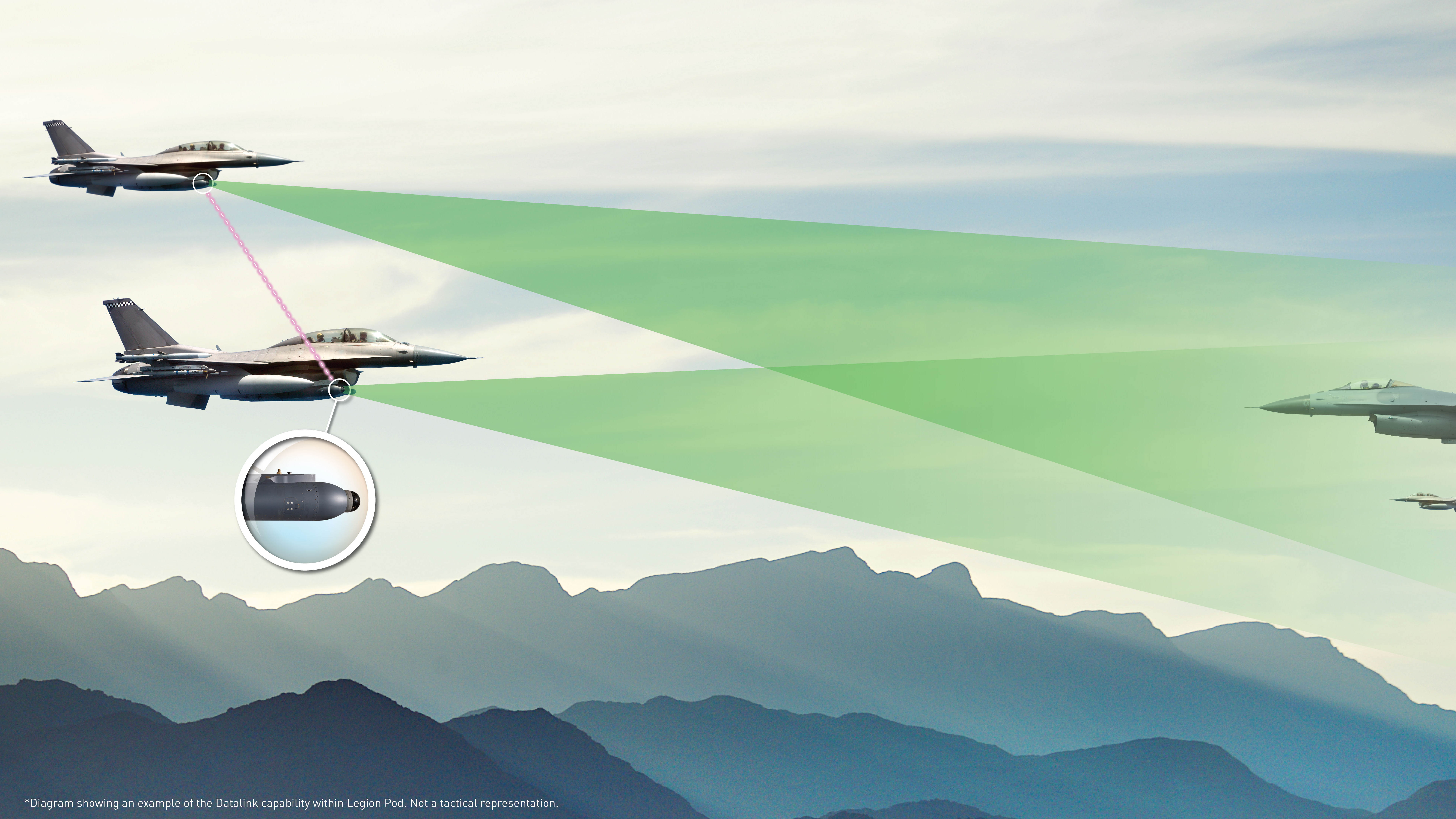
Unlike a radar, an IRST allows targeting to be conducted passively, so the hostile aircraft will not be alerted to the fact it’s been detected, nor will it be able to determine the location of the aircraft carrying the sensor. Another major advantage is that an IRST is not affected by electronic warfare jamming. Beyond that, targets designed for radio-frequency low-observability, such as stealthy combat aircraft and cruise missiles, are not immune to the IRST. It remains the best way to detect these targets at this time and when the IRST’s capabilities are fused with information from other sensors, including radar, both onboard the aircraft and off, it makes stealthy aircraft far more vulnerable to being successfully detected, tracked, and engaged.
On the other hand, there are some limitations to the effectiveness of these systems. For instance, atmospheric conditions can reduce the IRST’s range and acuity. Even more importantly, the IRST, in its basic form, is less able to provide a range calculation for a given target due to its ‘2D’ nature. Instead, the primary information it provides the pilot with is a bearing — the angle between the sensor and the target that’s been detected. Traditionally, a fighter pilot would be able to spot an aerial target using the IRST’s thermal optics, but would then have to use another device — typically radar — to determine how far away that target was, and how best to develop a firing solution to bring it down, if required. Otherwise, a shot could be taken without this information, albeit with a lower probability of kill.
“With a datalink directly integrated into Legion Pod, it enables the system to provide full 3D (angle and range) tracks to the aircraft,” Jim Ni, one of Lockheed Martin’s IRST Programs managers, explained to The War Zone. “The superior angle resolution of the IRST system can be used to promote weapons-quality solutions at even greater ranges than traditional IRST systems. The addition of datalinks with our field-proven IRST21 systems support joint all domain operations (JADO) by sharing IRST tracks across the battlespace.”
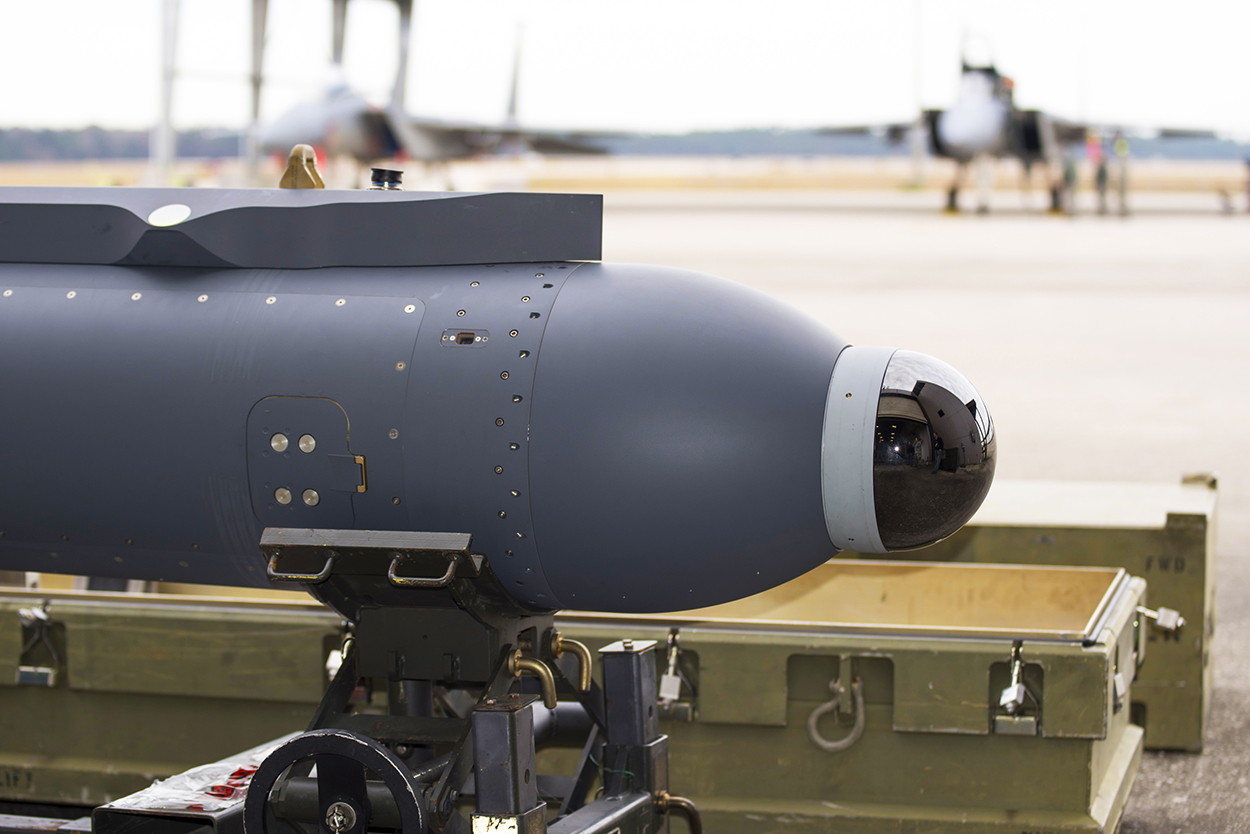
There are some workarounds to providing the triangulation that would greatly benefit the telemetry for an engagement, although they are less than ideal. You can read more about this and the IRST21’s capabilities in general in this in-depth piece of ours. Regardless, networking two aircraft with IRSTs together solves this issue.
In a press release, Lockheed Martin likens the range-finding ability to human binocular vision — in which two eyes, rather than one provide us with rapid depth perception and a 3D view of the world.
Essentially, two Eagles could team up during a counter-air mission and calculate accurate firing solutions without having to rely upon radar that would likely give away their positions. Since the IRST21 is intended to detect and track aircraft and other aerial threats at extended ranges, this enhances the capabilities of fourth-generation fighters equipped with the pods being able to engage targets at beyond visual range — and do it relatively stealthily. This is especially true when combined with tailored tactics and electronic warfare capabilities.
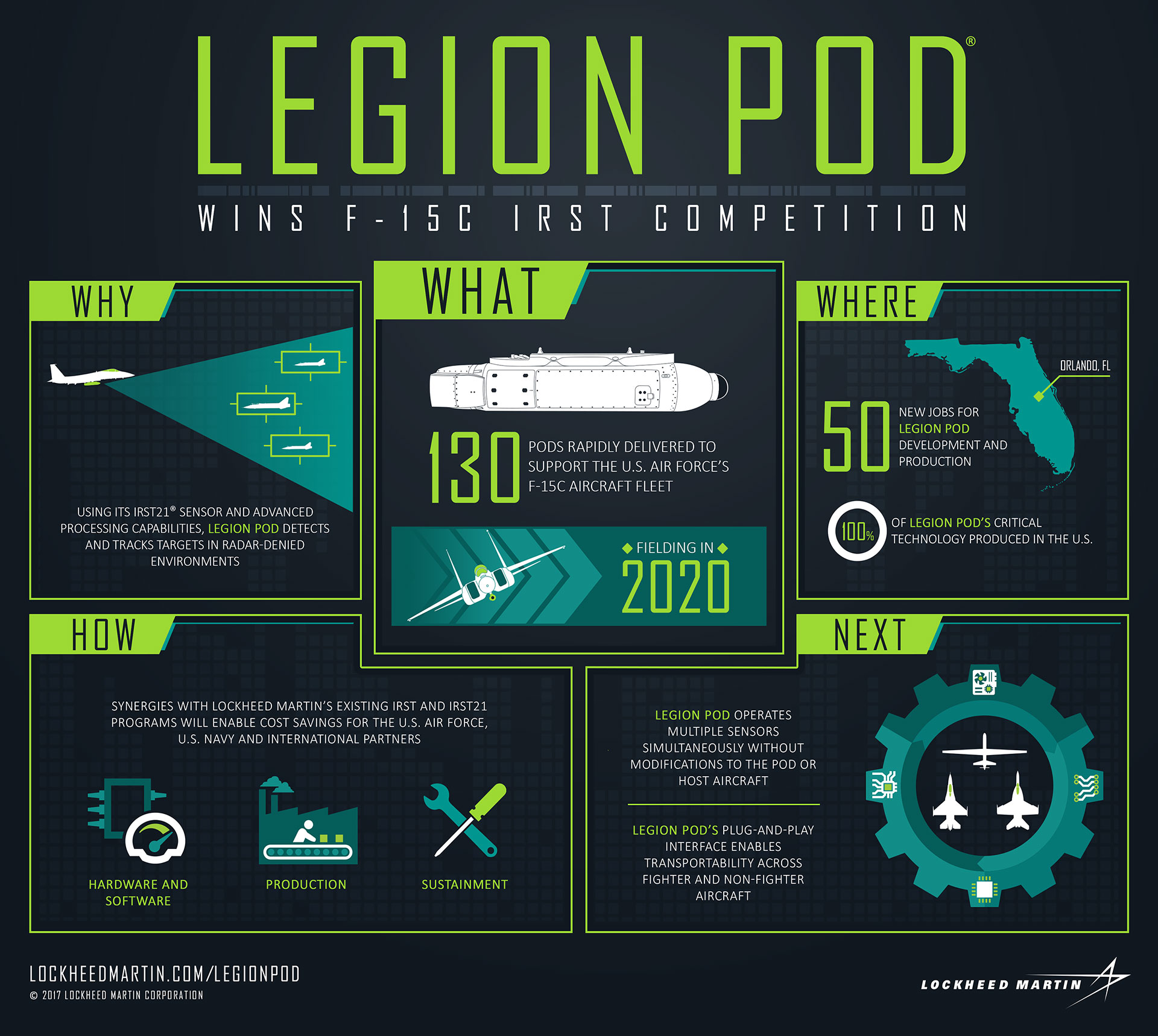
The benefits of this could be substantial, especially in the kinds of high-end, peer conflicts in which remaining undetected by the enemy for as long as possible, especially over great distances, will likely be important for survival. It also ties in with an increasing focus on very long-range missile engagements in general, something in which the F-15C has recently been at the forefront.
As well as boosting the combat potential of F-15Cs carrying Legion Pods, range data gathered by the datalinked sensors could be shared with other platforms too. For example, F-15s or F-16s with datalink-equipped Legion Pods might share tracks with F/A-18E/F Super Hornets, for which Lockheed Martin is also delivering the IRST21 as part of a U.S. Navy upgrade. Beyond that, the cooperative IRST capability will help add to the overall situational wareness of the battlespace that can be exploited by multiple platforms via networking.

In its initial form, the pod-to-pod datalink uses an IP-based waveform, known as Tactical Targeting Network Technology, or TTNT. Target data could be handed over by TTNT or via the aircraft’s existing datalinks, feeding critical information into networks like the Joint All-Domain Command and Control (JADC2) and the Advanced Battle Management System (ABMS).
For its part, TTNT, which was first used on the EA-18G Growler electronic attack aircraft, is rapidly emerging as an important waveform, something that The War Zone has examined in the past. Navy Super Hornets are now also getting TTNT connectivity as part of the Block III upgrade, which would further point to possible sharing between Legion Pod-equipped Air Force jets and Navy F/A-18E/Fs.
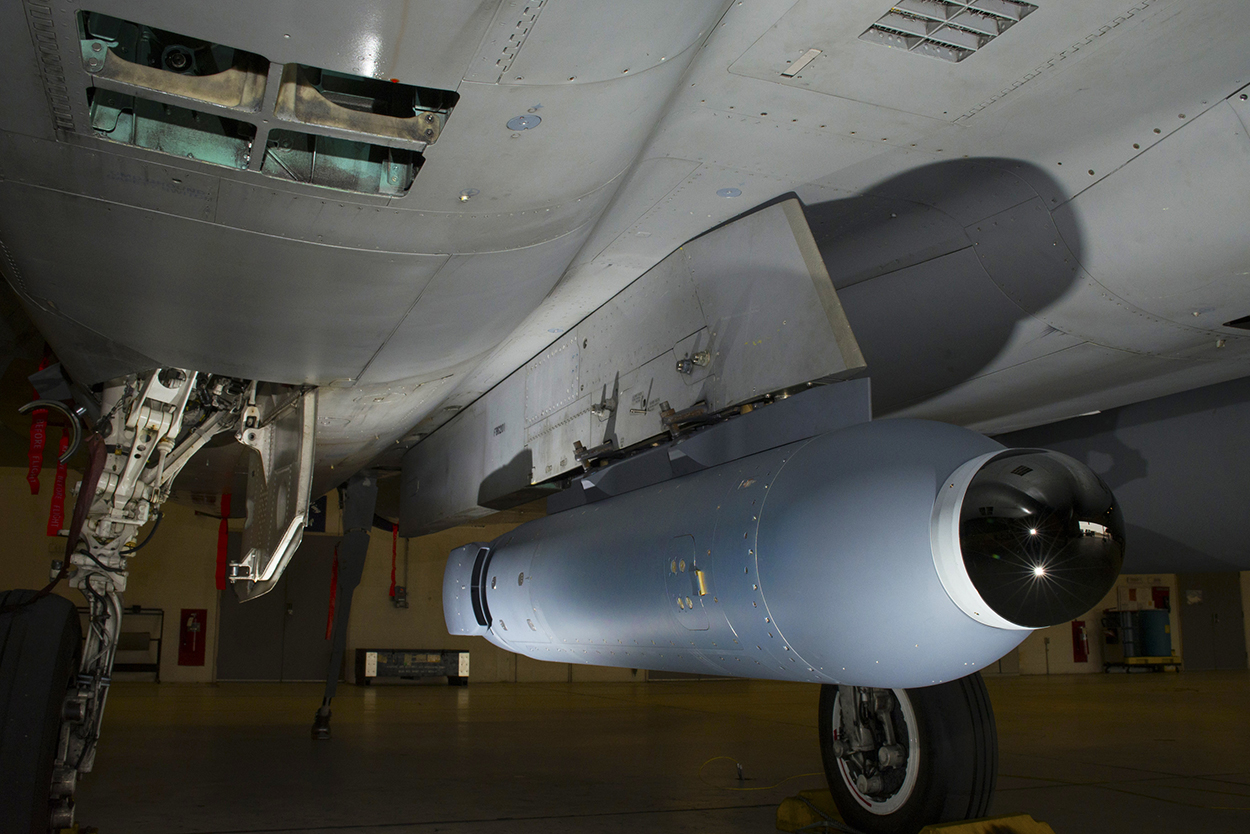
Using the pod rather than an existing aircraft datalink could have certain advantages, however, not least the fact that legacy systems often have limitations in terms of bandwidth. The data they process also has to pass through the aircraft’s onboard mission computer, which already has to deal with multiple data sources. Having the datalink in the pod itself smooths out this whole process, with the pod’s computer able to calculate target ranges rapidly and independently.
“The datalink in Legion Pod helps reduce the workload for our pilots so they can focus on the tracks that matter most, keeping them safe for a successful mission,” said Kenen Nelson, fixed-wing sensors program director at Lockheed Martin Missiles and Fire Control. “Additionally, this datalink capability further reduces the timeline for our pilots to engage a weapon, if needed, without having to sacrifice precious time.”
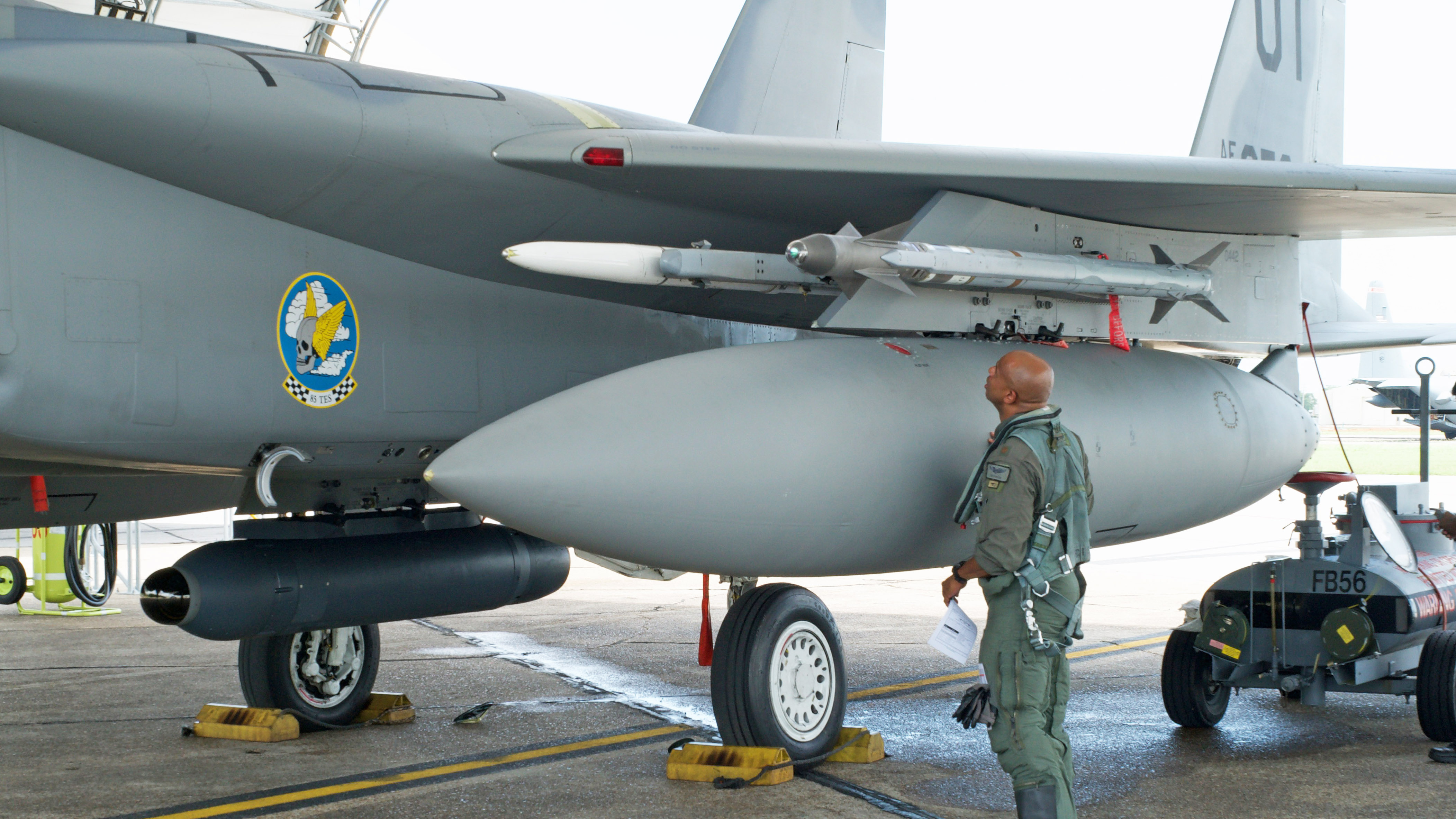
The process of adding the TTNT datalink into the Legion Pod is straightforward, Lockheed Martin says, involving a line replaceable unit that fits inside the existing pod structure. “Legion Pod was purposely built to accommodate the size, weight and power requirements of additional payloads,” Ni continued.
With that in mind, Lockheed Martin now has “near-term” plans to integrate datalinked Legion Pods onto the F-16 and then demonstrate F-15-to-F-16 IRST solutions, as well as sharing targeting data between unspecified “other platforms/weapon systems.” Notably, a TNTT datalink was already a part of the package that Lockheed Martin demonstrated to link F-35s and F-22s, suggesting other uses for the Legion Pod beyond just transferring IRST data.
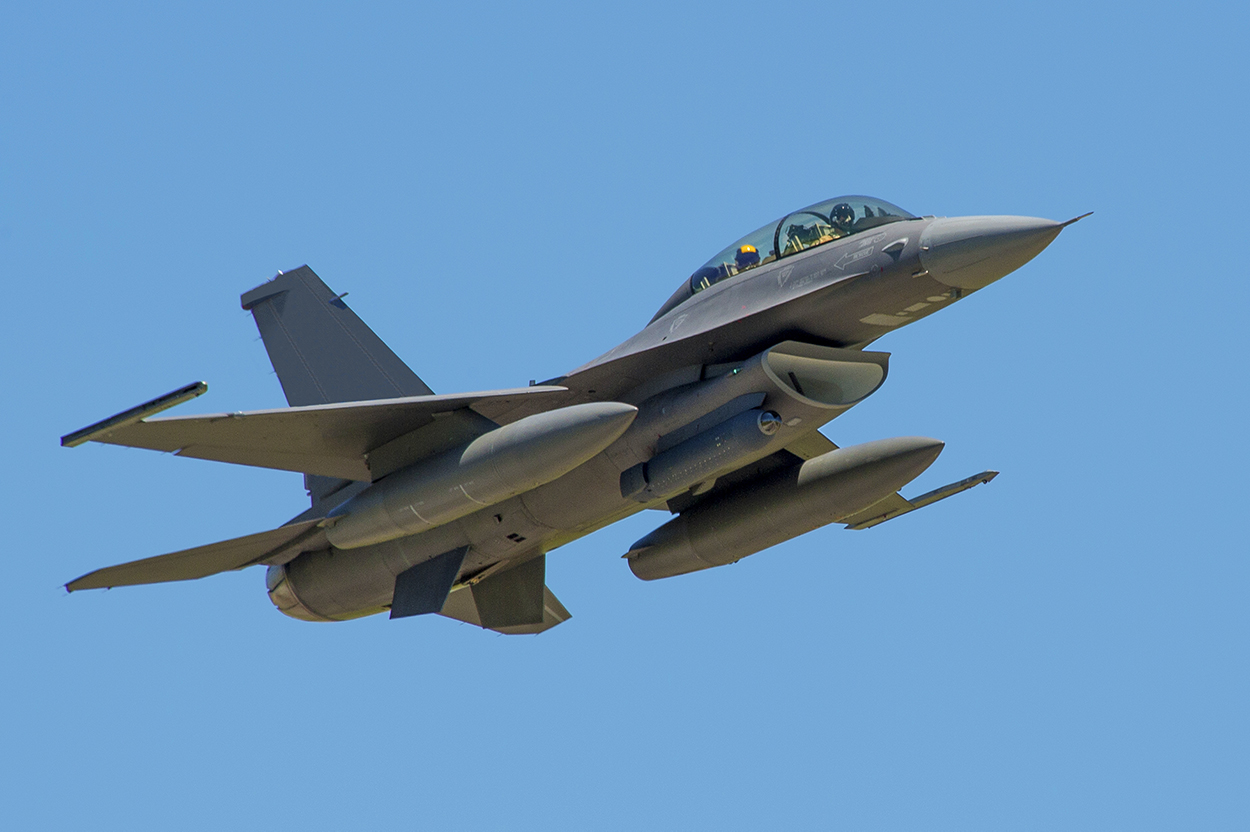
Indeed, while the initial demonstration of the concept was with TTNT, thought is already being given to adding different datalinked communications capabilities to the pods. “There are several other waveforms and radios that are being considered by the services that may be of interest to different customer sets,” Ni told The War Zone. “Due to its open architecture design, adding other payloads/radios can be accomplished within the existing design.”
That could pave the way for the pod being used as a “fifth-to-fourth generation gateway payload,” similar to the way in which the Talon Hate pod was used to enable communications between the F-15C/D and F-22 Raptor fleets, as well as other weapon systems.
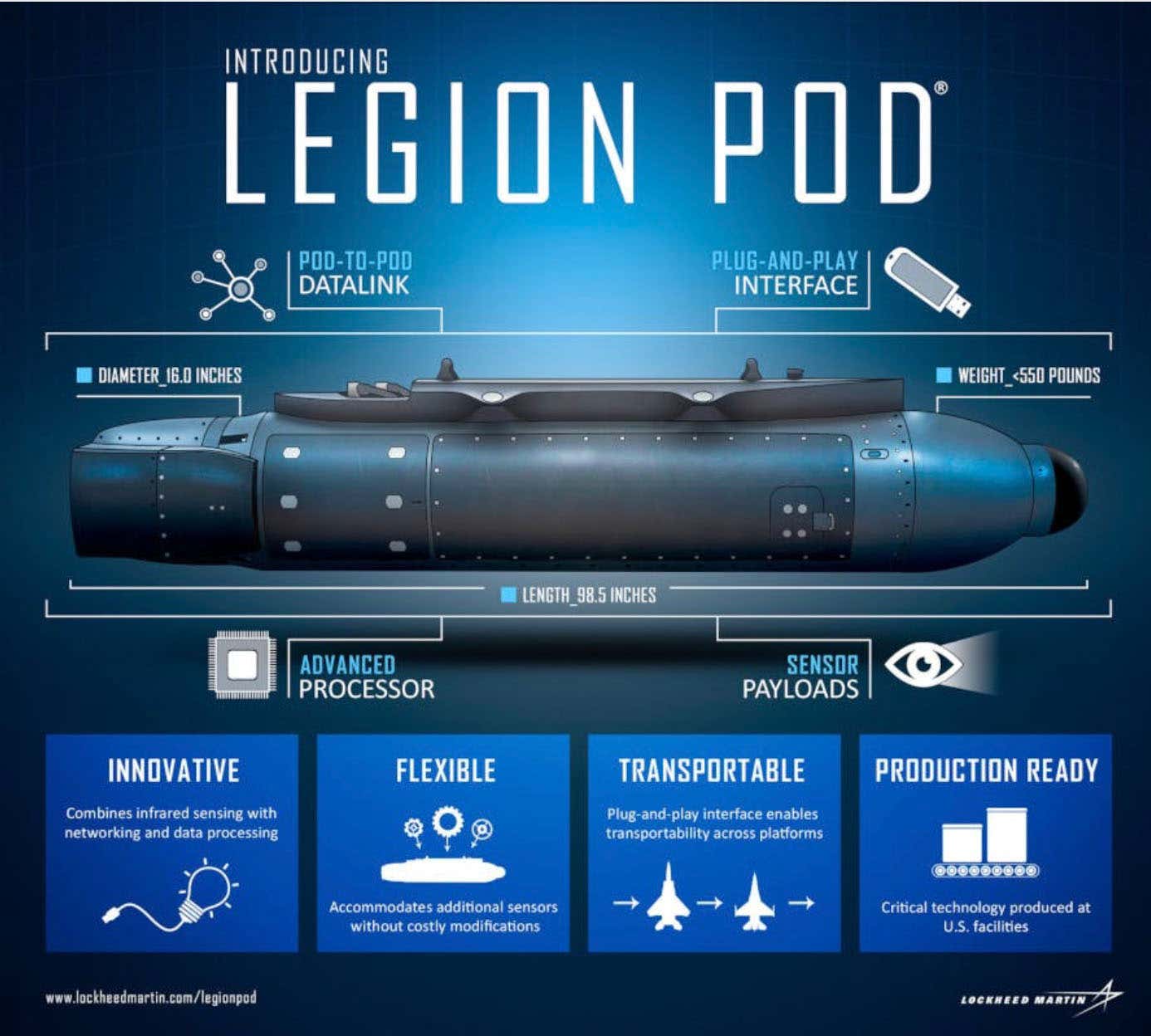
In this kind of scenario, a future datalinked Legion Pod could not only obtain and share highly accurate targeting data but also allow different air platforms to ‘talk’ to each other in new ways, or ways that weren’t previously possible.
“Adding a datalink payload — whether TTNT or communications gateway — to help fourth-gen aircraft support the fifth-gen fight is what we are focused on,” Ni explained. “Incorporating datalinks and fusion into our IRST product line builds on a 35-plus-year legacy of designing, fielding and sustaining IRST systems and enables air dominance in the future fight.”
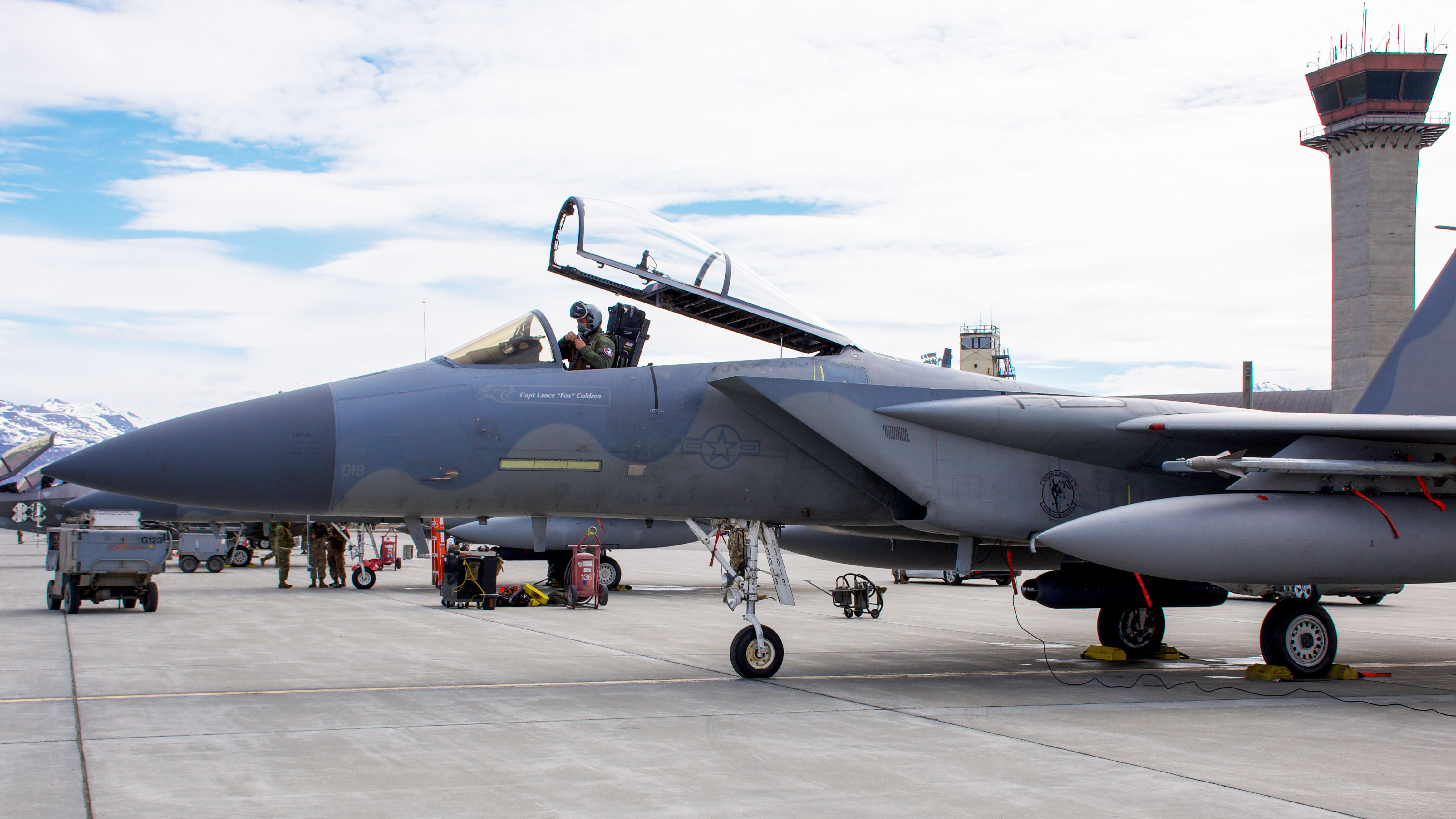
As well as aiding the flow of battle-critical data between manned aircraft, Lockheed Martin has also brought up the possibility of using pod-to-pod or pod-to-aircraft communications in support of manned/unmanned teaming, a concept that’s rapidly gaining traction with all branches of the U.S. military.
The Legion Pod with IRST21 was selected by Boeing and the Air Force for the Eagle Integrated IRST program in 2017. However, the dedicated datalink is not part of the program of record right now, with Lockheed Martin using internal funding and working with the Air National Guard to develop and demonstrate the capability, including at Northern Edge. The company says that interest “across the Department of Defense” has grown since the pods were flown at last month’s Northern Edge.
Linking pods in this way certainly seems to offer a significant boost in sensor and communications capability and could also be a pathway toward expanding the data-sharing capabilities of the Legion Pod in the future.
Contact the author: thomas@thedrive.com
